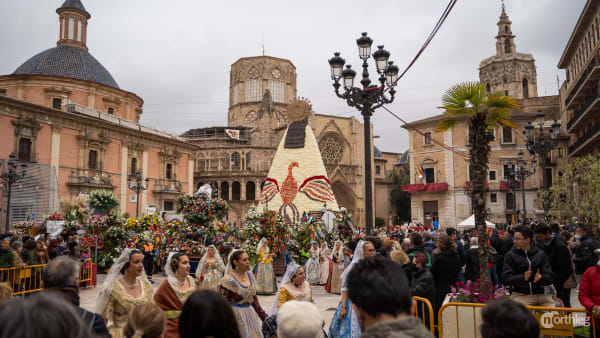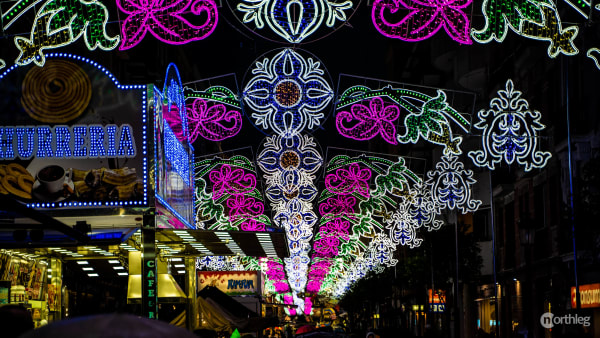Men’s outfit
Men’s outfit
Much like the women’s clothing, Valencian men’s folk costumes are inspired by clothing of the 18th century to the 20th century. Also similarly to women’s clothing, historical accuracy is not always strictly respected, and different variations of the outfit can be seen.
The main style influences on this type of clothing are Anglo-French and Moorish-Balkan. Western European fashion was mainly copied by the Spanish ruling minority, and thus some fashion patterns were slowly and partly adopted by the working-class majorities.
Some other pieces instead, like the saragüells, are clearly inherited from Mediterranean traditional clothing, and bear a resemblance to some types of Albanian, Greek, and even Turkish traditional trousers. Here are all the pieces you might see being worn by the falleros, especially during parades such as the Ofrenda de Flores.

Undergarments
- Camisa: A long and loose shirt made of linen or cotton, with long cuffed sleeves. It is sometimes decorated or embroidered at the front.
- Calzoncillo or calçotet: Loose linen or cotton breeches used to cover the body from the waist to the knees at least.
Trousers
You will probably see the falleros wearing one of these two garments on their lower body.
- Saragüell: A very loose type of trouser made of cotton or linen. It normally reaches just above the knee. It is sometimes paired with a negrilla, a black or darker trouser placed on top of the saragüell.
- Torrentí or calçò: It is a more fitted type of trouser, usually in wool, cotton, or even silk. It generally reaches under the knee and has slits to the side, often tied up with buttons or laces. They are often black, brown or blue.
Upper body
- Chaleco or jopetí: A fitted waistcoat, usually in silk, cotton, velvet or wool. The pattern is usually more elaborate than the other basic pieces, with stripes, flowers, or other braided decorations.
- Chupa or jupa: A short jacket with long, narrow sleeves, usually in wool, cotton, velvet or silk.
Accessories
- Faixa: A large and usually colourful sash that holds the saragüell or calçò up.
- Pañuelo: A silk or cotton handkerchief worn on the head.
- Hats: They can be monteras, rodinas, or calanyés.
- Stockings: Usually extremely colourful, made of silk, wool or cotton, these stockings are used to cover the leg up to the knee.
- Zapatillas de esparto or alpargatas: Espadrille-type of footwear, made of leather or fabric and jute.
- Manta: Traditional thick blankets made of wool, worn on top of the clothes as shawls or on the shoulder. They can be mantas morellanas (the most colourful ones, usually with horizontal stripes and small patterns) or de Bocairent (windowpane or checkered patterns).















